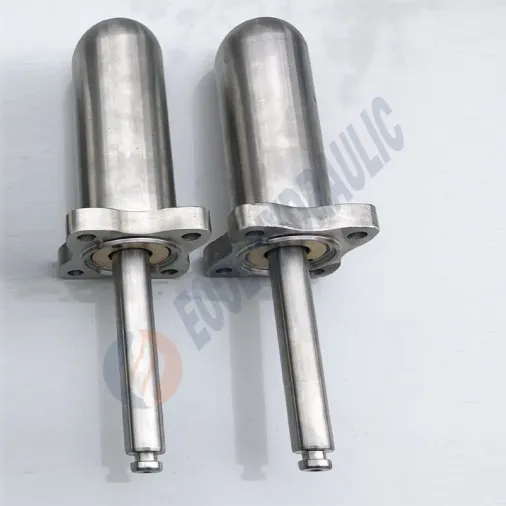The Principle of Nanofiltration Membrane in Water Treatment
What is nanofiltration?
The burst of filtration and filtration-related activity that followed the development of the phase-inversion process for the manufacture of polymeric membranes, in the early 1960s, led to the establishment of three membrane separation processes: reverse osmosis, ultrafiltration and, more recently, microfiltration. These processes took the separation spectrum from the traditional cut point limit of standard filtration of around 0.01 mm (10 μm) to the very finest distinct solids, a few nanometres in size, and enabled the separation of large molecules from solution. The actual size ranges vary somewhat from source to source, but there is general agreement that microfiltration covers the range 10 μm down to 0.1 μm, while ultrafiltration covered 0.1 μm down to 0.005 μm (5 nm) in terms of discrete particles or Molecular Weight Cut-Off (MWCO) figures of 300,000 down to around 300 Daltons for dissolved materials. Reverse osmosis, of course, was designed to retain the very small sodium chloride molecule, which meant passing nothing else but water.
These intended size ranges actually still left a gap in their coverage at the lower end of that for ultrafiltration (at around 100 to 300 Daltons). Membrane development was fairly rapid during the 1970s and 1980s, leading to a “loose RO” membrane process, which was given the name “nanofiltration” at the end of the 1980s.
The key difference between nanofiltration and reverse osmosis is that the latter retains monovalent salts (such as sodium chloride), whereas nanofiltration allows them to pass, and then retains divalent salts such as sodium sulphate. Robert Peterson, in his Foreword to Elsevier's Nanofiltration – principles and applications, describes reverse osmosis (especially in the water treatment business) as the main course, the steak perhaps, of a meal, whereas nanofiltration “is like the wine menu … an opportunity for creativity and exploration”.
UC NF 500 Series-NF Membranes UC NF-500-400
The working principle of nanofiltration membrane:
The pore size of the nanofiltration membrane is nanoscale, which can allow water to pass completely, while intercepting or partially intercepting substances with a larger molecular weight than water. For ions, the higher the ion valence, the higher the retention rate of thenanofiltration membrane. In general, nanofiltration membranes allow the passage of monovalent ions and the rejection or majority of divalent or multivalent ions. Heavy metal ions and phosphorus are generally multivalent ions, and nanofiltration membranes have high rejection rates for them. For the difference of organic components such as COD and BOD composed of materials, nanofiltration membranes with different molecular weight rejection ratios can be selected for the concentration treatment of wastewater, and the organic pollutants are trapped in the concentrated solution, so that water and monovalent ions permeate the membrane.
Application of nanofiltration membrane:
Industrial applications of nanofiltration are quite common in the food and dairy sector, in chemical processing, in the pulp and paper industry, and in textiles, although the chief application continues to be in the treatment of fresh, process and waste waters.
Nanofiltration membranes are mainly used in softened water treatment, purified water treatment, wastewater purification treatment, and the concentration and separation of valuable components in process material solutions in the field of drinking water and industrial water. At present, nanofiltration membranes in domestic and foreign markets are mainly used in the field of drinking water. Nanofiltration membranes are used to soften water, reduce the concentration of TDS, and remove chromaticity and high molecular weight organics. Nanofiltration membranes have higher water fluxes at lower operating pressures, therefore, in many fields, treatment processes with nanofiltration membranes are more economical in capital and operating costs than reverse osmosis processes.
Ningxia for a Coal Chemical Power Plant workshop
NF membranes are also used for the removal of natural organic matter from water, especially tastes, odours and colours, and in the removal of trace herbicides from large water flows. They can also be used for the removal of residual quantities of disinfectants in drinking water.
Food industry applications are quite numerous. In the dairy sector, NF is used to concentrate whey, and permeates from other whey treatments, and in the recycle of clean-in-place solutions. In the processing of sugar, dextrose syrup and thin sugar juice are concentrated by NF, while ion exchange brines are demineralised. NF is used for degumming of solutions in the edible oil processing sector, for continuous cheese production, and in the production of alternative sweeteners.
There are probably as many different applications in the whole chemical sector (including petrochemicals and pharmaceuticals) as in the rest of industry put together. Many more are still at the conceptual stage than are in plant use, but NF is a valuable contributor to the totality of the chemicals industry. The production of salt from natural brines uses NF as a purification process, while most chemical processes produce quite vicious wastes, from which valuable chemicals can usually be recovered by processes including NF. The high value of many of the products of the pharmaceutical and biotechnical sectors allows the use of NF in their purification processes.
The paper pulp industry uses a very great quantity of water in its production processes, a quantity that the industry is striving to reduce, mainly by “closing the water cycle” – a system in which the purification properties of NF have a major role.




评论
发表评论